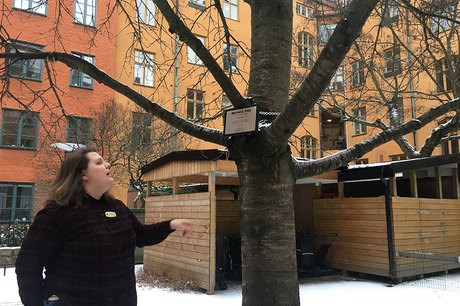'Play and joy' in the snow
Monday, March 5, 2018
A strong emphasis on the outdoors and a later start to formal learning are key in Scandinavia, Catherine Gaunt discovered on Nursery World’s study tour to Finland and Sweden last month
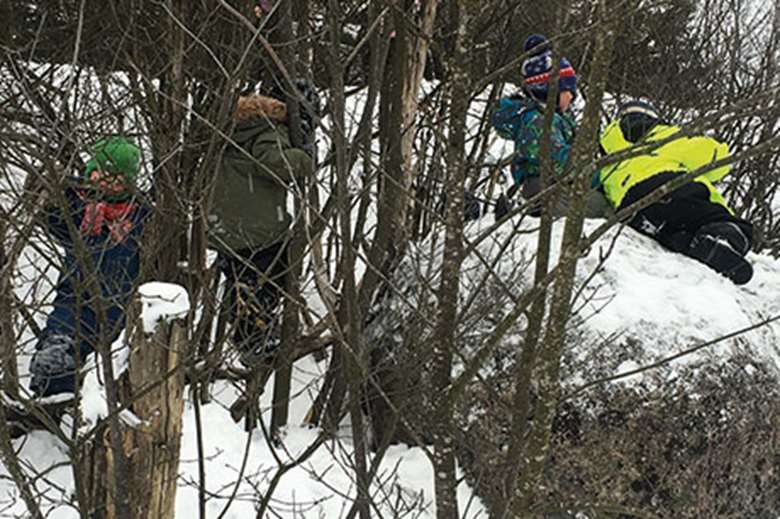
In an introductory talk on the Finnish system, pedagogical expert Leena Heinilä from VisitEDUfinn summed up the country’s approach to education as ‘play and joy’.
Our group of 10 on the Nursery World study tour were able to visit two nurseries in Finland and four in Sweden over half-term in February.
Play and joy was something we witnessed lots of first hand over the course of the week in countries which place an emphasis on the importance of the outdoors for children’s development and the health and well-being of all.
As young children in the UK face increasing pressure towards more formal learning, in Finland and Sweden young children start school in the year they turn seven, after attending pre-school from one to six.
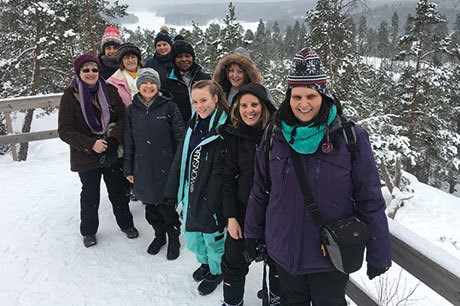
Our group of travellers at the Nuuksio National Park in Finland
FINLAND
Mörrintupa Forest Preschool
Our first visit took us to this forest pre-school a few kilometres outside Helsinki.
Mörrintupa, which follows the Steiner educational philosophy, exemplifies why early years educators in the UK consider the Forest School approach to be excellent practice.
A short walk from the nursery building, we joined a group of five- and six-year-olds for a morning in the forest. The children spend a lot of time outdoors, learning through their own play and developing at their own pace.
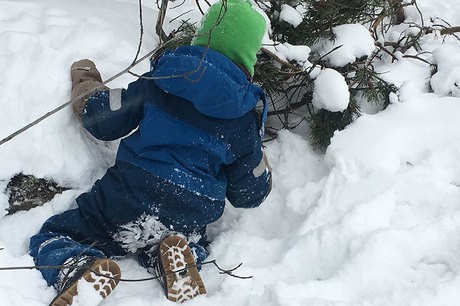
The learning we observed was child-initiated, with children talking to each other and totally absorbed in their play, largely oblivious to the presence of adults. In terms of risk assessment, the pre-school teachers watch the children all the time but from a distance – observing children as they climb rocks, play on trees, slide in the snow, and generally roll around, having fun.
One boy lost his boot in the snow and calmly sat down, patiently pulled his foot inside his snowsuit and waited for the teacher to return and reunite him with it. The head teacher explained they always have spare socks, gloves and jumpers with them.
The most fascinating thing was when we saw children playing with branches that had fallen from the trees, and our guide Nani translated and explained they were pretending to be in a sauna – saunas play a major role in Finnish day-to-day life. The children brushed themselves with the branches, which as one of our group pointed out was a perfect example of symbolic play.
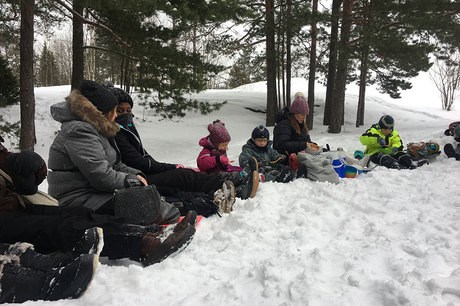
We shared a delicious lunch of homemade vegetable soup in the snow, followed by the head teacher Carita Vilamo leading the children in songs.
Back at the pre-school, a teacher walked from room to room singing softly, to bring the children together for a storytelling session. The teacher recited a traditional folk tale from memory and the children listened intently. We learnt that the same story is told every day for a week, with children taking turns to light a candle with the teacher’s help at the start of the session.
Preschool Auringonkukka, a municipal daycare centre and pre-school in Viikki This is a large nursery with more than 100 children, so provided an interesting contrast to our first visit. We had the chance to chat to Marja-Liisa Kärkkäinen, head of the daycare unit, and meet some of the pre-school staff, including Mikko Grohn (pictured), one of five men employed at the centre.
This is a large nursery with more than 100 children, so provided an interesting contrast to our first visit. We had the chance to chat to Marja-Liisa Kärkkäinen, head of the daycare unit, and meet some of the pre-school staff, including Mikko Grohn (pictured), one of five men employed at the centre.
The children walk to the nearby forest regularly, but because it was Shrove Tuesday, they all took part in a special programme of outdoor activities and games in the large playground and enjoyed a snack of special buns.
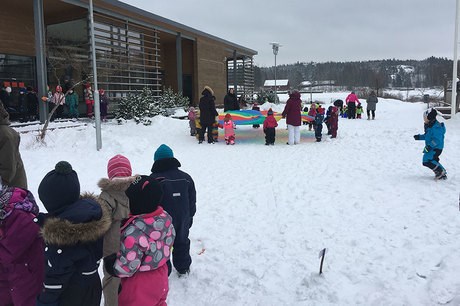
The nursery opens from 6am to 10pm to cater for working parents and on average parents pay around 300 euros a month, although those on low incomes are completely subsidised. We learnt that children are taught to write in capital letters first, and only learn how to write lowercase letters when they move on to school.
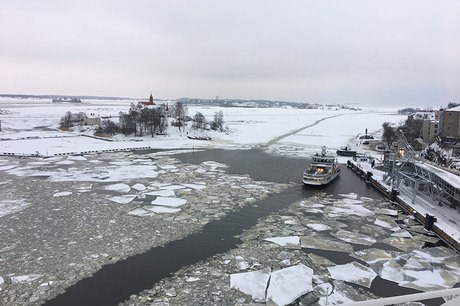
Leaving Helsinki on the overnight Silja ferry to Stockholm
SWEDEN

Dawn in Sweden
Preschool Inspira Terrassen
We arrived in Stockholm early on the Wednesday morning for the second stage of our trip, travelling across the icy Baltic sea on the overnight ferry from Helsinki. After an introductory talk on Swedish education from our guide Elizabeth from Sweducare, we made our first visit to Preschool Inspira Terrassen.
More than 20 languages are spoken by the children at this multilingual pre-school on the outskirts of Stockholm. Children come from all over the world, including Russia,
Afghanistan, Turkey and Mongolia. Fifty-five children attend the pre-school daily from at least 9am to 3pm, and the pre-school can open as early as 6am and closes at 6pm to cater for working parents.
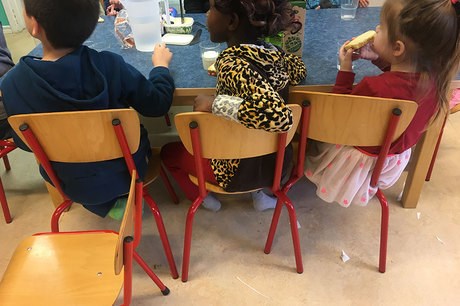
Children may speak three or four languages, for example Turkish and Finnish at home,Swedish at the pre-school, and watch films in English. Manager Cilla Tapo said, ‘In our curriculum it says that pre-schools should strive to ensure that children who have a mother tongue other than Swedish develop the culture, identity and ability to communicate in both Swedish and the mother tongue.’
She added that ‘singing is the key’ to language, giving the example of one child who had learnt a difficult Swedish word through singing. Parents share with the pre-school the languages that are spoken at home and help the staff learn some words in their own language.
Hälsoförskolan (Health preschool) Friskus
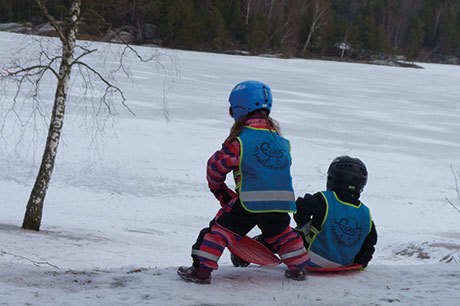
The Friskus pre-school in Trangsund, outside Stockholm, is situated in a protected nature area and considers the outdoors to be the children’s ‘backyard’. The day we visited, the lake just a few minutes’ walk from the pre-school was frozen with 17cm of ice – it has to be frozen to a depth of 20cm for the children to skate on it. Instead, the pre-school children were enjoying sledging on snow saucers.
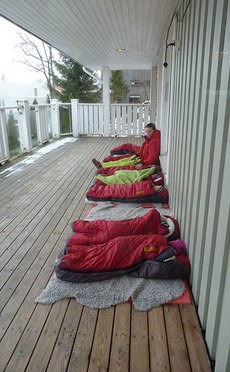 Here, the younger children take their naps outdoors on the decking, even in minus temperatures. In the summer, children do yoga outside on mats on the deck, which they also use to play floor ball to maximise space. Children also learn mindfulness and how to massage each other.
Here, the younger children take their naps outdoors on the decking, even in minus temperatures. In the summer, children do yoga outside on mats on the deck, which they also use to play floor ball to maximise space. Children also learn mindfulness and how to massage each other.
Spending several hours outside all year round – whether ice-skating, skiing, or sometimes swimming – is central to this pre-school’s ethos, which also uses Montessori and Reggio Emilia philosophies. The children have 10 weeks of swimming lessons in the spring because, the manager told us, in Swedish society there is a belief that children should learn to swim early.
Photos: Ruth Moore
Kåsen Preschool
In the afternoon we drove back into Stockholm to see this ‘I ur och skur’ pre-school, which roughly translates as ‘come rain or shine’ and is an outdoor pedagogy concept. More than 200 pre-schools in Sweden are ‘I ur och skur’. ‘I ur och skur’ is promoted by
Friluftsfrämjandet, a Swedish non-governmental organisation that has been actively campaigning for an outdoor lifestyle since 1892.
The pre-school started in 1994 and has been based in its current building since 2015. It is further from the forest than before, but uses bicycles to take the children in their age groups to the forest for activities once a week. Kåsen focuses on the Skogsmulle pedagogy, designed to foster a respect and love of nature. Created in the 1950s by Gösta Frohm, the Skogsmulle, or Mulle, is a fictional forest creature.
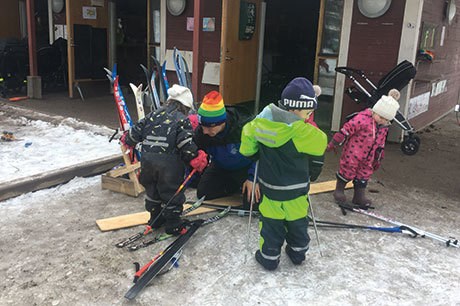
The children take part in forest activities according to their age. For one- to two-year-olds there is the Skogsknopp; for three- to four-year-olds the Skogsknytte; and the Skogsmulle for five-to six-year-olds. Children also take part in ice-skating, and on the day we visited were skiing around the large outdoor area.
Pysslingen Vita Bergen Preschool
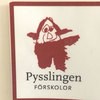 Our final visit was to this gender-free pre-school in the centre of Stockholm, part of Pysslingen, a chain of 115 pre-schools across Sweden. The nursery for 52 children is one of
Our final visit was to this gender-free pre-school in the centre of Stockholm, part of Pysslingen, a chain of 115 pre-schools across Sweden. The nursery for 52 children is one of
several LGBTQ-certified pre-schools in the city. Here children are able to identify as ‘he’, ‘she’, or the gender-free pronoun ‘ze/they’, depending on how they feel each day.
Most children come from mixed-sex families, with some from ‘rainbow’ (same sex) families. The pre-school eschews gender stereotypes. As pre-school teacher Karro Olofsson explained, ‘We wouldn’t say that’s a beautiful dress, we’d talk about the colours and how you can move in it.’
Children visit parks and museums and share a garden with other apartments. In the garden there is the Children’s Tree, a project that involves the planting of trees to highlight the United Nations Convention on the Rights of the Child.
